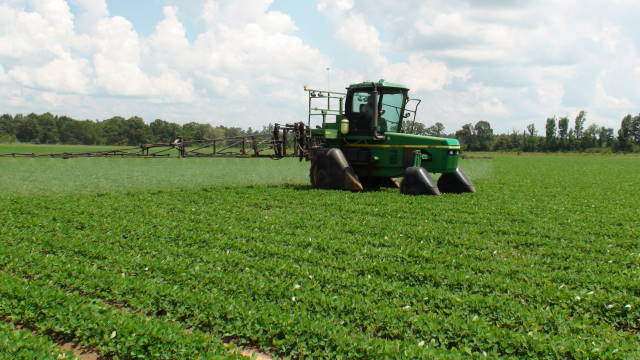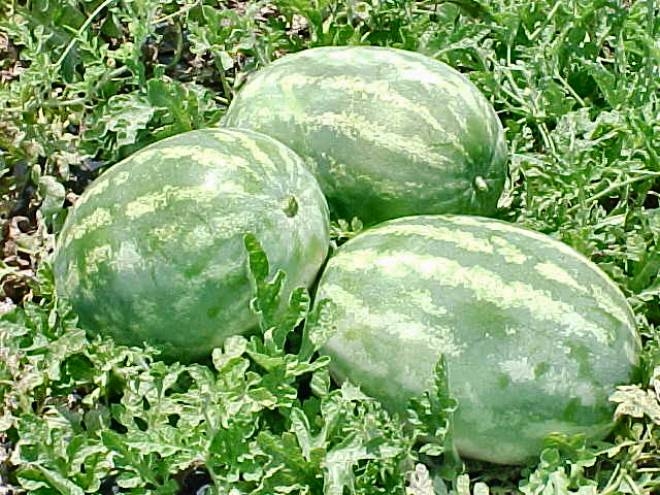The University of Florida IFAS Extension offers a database of fact sheets available for free download on the Internet called EDIS (Electronic Data Information Source) that has many publications of interest to farmers and ranchers in Northwest Florida. Each fact sheet has a PDF or printer friendly link in the top left corner. The following are just a few of the new fact sheets that were recently added to the collection pertaining to commercial agriculture production. http://edis.ifas.ufl.edu

Row Crops
Carinata Production in Florida
Brassica carinata is a promising oilseed crop with great potential for profitable cultivation in Florida. Its high oil content and favorable fatty acid profile make it suitable for the biofuel industry, especially as a biojet fuel. The UF/IFAS North Florida Research and Education Center (NFREC) in Quincy, Florida, has been working to identify advanced carinata genotypes that are high yielding (seed and oil), disease resistant, early maturing, and adapted to Florida. The work at NFREC is being done in conjunction with Agrisoma Biosciences Inc., a crop company that has the world’s largest collection of carinata germplasm. This 6-page fact sheet’s “Agronomic Management” section provides recommendations resulting from NFREC’s research. was written by C. M. Bliss, R. Seepaul, D. L. Wright, J. J. Marois, R. Leon, N. Dufault, S. George, and S. M. Olson, and published by the UF Department of Agronomy, December 2014.
http://edis.ifas.ufl.edu/ag389
Livestock
How Do I Legally Sell Meat from My Own Livestock and Poultry in Florida?
There is much interest in locally produced foods, but the federal, state, and local regulations can be confusing. This 5-page fact sheet is a “one-stop-shop” for Florida residents who want to sell meat from their own livestock and poultry. Written by Chad Carr, Jason Scheffler, Larry Eubanks, Ron Webb, Lee Cornman, Scotland Talley, and Steve Stiegler, and published by the UF Department of Animal Sciences, December 2014.
http://edis.ifas.ufl.edu/an316
Cull Cow Beef Quality Issues series
Cull cattle are those that are sold from a herd for lack of performance, lack of resources, or genetic improvement The non-fed beef cattle market (cattle that are not managed through traditional feedlot finishing systems) is comprised primarily of cull cows and bulls. To address liability and food safety concerns, this series of articles discusses some quality defects identified in the non-fed beef market, how to prevent them, and how to address them when they appear in cattle. http://edis.ifas.ufl.edu/topic_series_cull_cow_beef_quality_issues
- Injection Sites and Abscesses
- Overview of Cull Cow Beef Quality Issues
- Horns, Ocular Squamous Cell Carcinoma, and Lumpy Jaw
- Bruising, Condemnation, and Foreign Objects
- Cow Condition and Muscling
- Hide Defects, Contamination, and Non-Ambulatory Cattle
Selective Antibiotic Treatment for Dairy Cow Mastitis
Mastitis is the most common disease in dairy cattle and is estimated to cost dairy farmers $179 a case. When farmers detect clinical mastitis, they usually take immediate action with antibiotics; but many cases either do not need antimicrobial treatment, resolve without treatment, or are not effectively treated by the antimicrobial used. A selective treatment approach can be more effective. This two-step strategy involves first identifying the pathogen, then deciding on a treatment — this would decrease the use of antimicrobials as well as treatment-associated costs for the farmer. This 5-page fact sheet was written by Kathryn Merriman, Fiona Maunsell, Corwin Nelson, and Albert De Vries, and published by the UF Department of Animal Sciences, December 2014. (Photo: University of Minnesota Laboratory for Udder Health, 2004)
http://edis.ifas.ufl.edu/an306
Understanding Pregnancy Diagnosis in Beef Cattle
Because 55 to 70 percent of the input costs associated with a beef cattle operation are related to nutrition, culling open (non-pregnant) cows after the breeding season can save as much as $200 per head that can be diverted to the purchase or development of replacement females, sire selection, increased nutritional management, and other management-related costs. Pregnancy diagnosis can be performed simply during vaccination or at the time of weaning. There are three practical methods: rectal palpation, transrectal ultrasonography, or blood test. This 5-page fact sheet was written by G. Cliff Lamb, Darren D. Henry, Vitor R. G. Mercadante, and Doug E. Mayo, and published by the UF Department of Animal Sciences, November 2014.
http://edis.ifas.ufl.edu/an314
Potential Bull Buyers Perceive Increased Value to their Operations When Purchasing Bulls from the Florida Bull Test
Since its beginning in 2000, the Florida Bull Test has been under constant evolution to achieve its goal of helping producers select high-quality sires, thereby improving production and profitability of beef cattle producers in Florida and the Southeast United States. A survey of potential buyers before the 2014 sale succeeded in identifying which characteristics of bulls are most important to buyers purchasing bulls: purchasing bulls from the Florida Bull Test increases the value of calves sired by improving performance, genetics, and feed efficiency of their herds. This 3-page fact sheet was written by Vitor R. G. Mercadante, Darren D. Henry, Francine M. Ciriaco, Paula M. Mercadante, Tessa Schulmeister, Nicolas DiLorenzo, and G. Cliff Lamb, and published by the UF Department of Animal Sciences, November 2014.
http://edis.ifas.ufl.edu/an313
Saddle and Tack Care in Hot and Humid Environments
The South’s climate is appealing for equestrian activities. While riders enjoy the weather, it creates some challenges in caring for saddles and other tack. When the weather becomes hot and the humidity climbs and the rains are frequent, a tack room can become a breeding ground for mold and mildew. There are several things a rider can do, however, to lower the incidence of mildew on saddles and tack. This 3-page fact sheet was written by Joel McQuagge, Todd Thrift, and Ed Johnson, and published by the UF Department of Animal Sciences, November 2014.
http://edis.ifas.ufl.edu/an303

Horticulture
Postemergent Herbicides for Use In Ornamentals
Postemergent herbicides are applied directly to weeds. This 5-page fact sheet is largely comprised of two tables: Table one lists postemergent herbicides that can be safely used over the top of some ornamentals when used according to label directions; table 2 lists postemergent herbicides that are registered for use around ornamental plants when applied as a directed spray. Written by Jeffrey G. Norcini and Chris Marble, and published by the UF Department of Environmental Horticulture, November 2014. (UF/IFAS photo: Thomas Wright)
http://edis.ifas.ufl.edu/wg059
Techniques for Melon Grafting
Grafting as a cultural practice for controlling soilborne diseases and improving abiotic stress tolerance has been widely used in vegetable production in many areas of Asia and Europe. Interest in vegetable grafting has been growing in the United States in recent years, as well. Cost, along with the desire to customize scion cultivars and the need to produce organic transplants, has led many small and organic growers to choose to graft plants by themselves. To help growers who are interested in grafting melon plants achieve a high graft survival rate, this 5-page fact sheet introduces commonly used grafting techniques and their application in specific circumstances. Written by Wenjing Guan and Xin Zhao, and published by the UF Department of Horticultural Sciences, December 2014.
http://edis.ifas.ufl.edu/hs1257
Source:ufl.edu